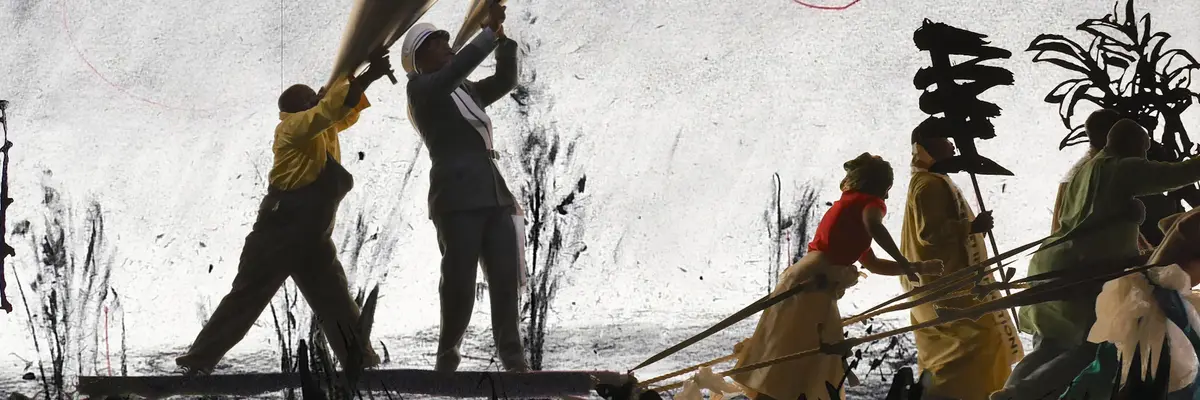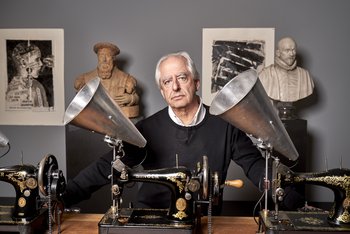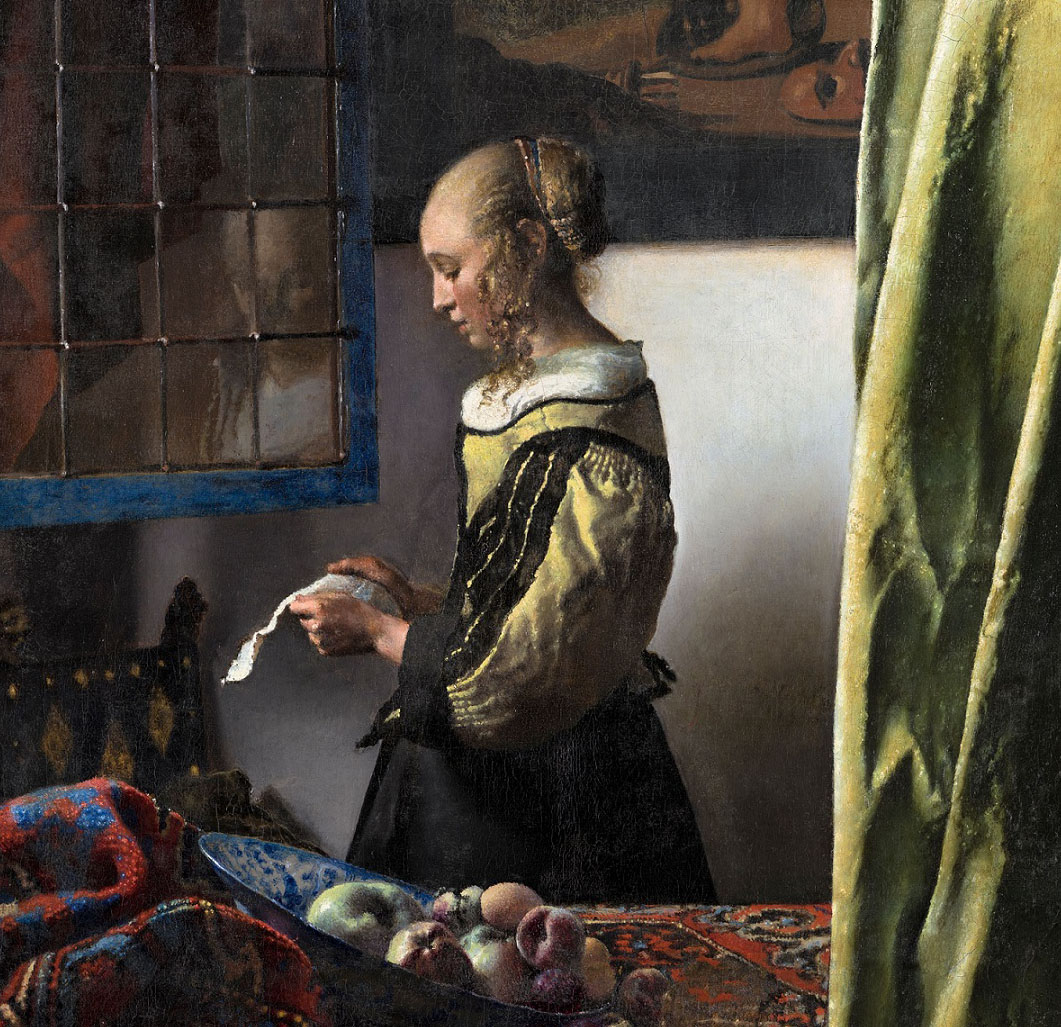
William Kentridge Biography
Picture

Biografie William Kentridge
28 April 1955 Born in Johannesburg into a family with Lithuanian-Jewish roots. His father, Sydney Kentridge (born in 1922), and his mother, Felicia, née Geffen (1930–2015), were lawyers who fought for the rights of the oppressed Black population during the apartheid regime (including defending the defendants in the Treason Trial of 1956–1961, defending the three future Nobel Peace Prize winners Nelson Mandela, Desmond Tutu and Albert Luthuli, representing the family of Steve Biko (1946–1977) and founding the Legal Resources Centre in 1979).
1961–1967 Attends King Edward VII Preparatory School in Houghton, Johannesburg, where Kentridge first draws with charcoal.
1974 After briefly studying fine arts at the University of the Witwatersrand (Wits) in Johannesburg, Kentridge switches to political science and African studies.
1976–1978 Parallel to his studies at Wits University, Kentridge studies art at the Johannesburg Art Foundation under Bill Ainslie (1934–1989), painter, activist and founder of the first and for a long time only multi-ethnic art school in South Africa.
Between 1975 and 1991, Kentridge works as an actor, director, scenographer and poster designer for the Junction Avenue Theatre Company, which he co-founded. He is involved in anti-apartheid activities.
1979 First solo exhibition showing a series of monotypes (known as The Pit) held at the Market Gallery in Johannesburg.
1981 Studies acting for one semester at the École Internationale de Théâtre Jacques Lecoq in Paris.
1982 Kentridge marries rheumatologist Anne Stanwix.
1984 After a three-year creative break as a visual artist, Kentridge creates the short film Salestalk, which wins an award at the American Film Festival in New York.
1986 He produces his first animated film, Vetkoek/Fête Galante.
1989 Johannesburg, 2nd Greatest City after Paris is the first film in the animated film series Drawings for Projection. A further ten films in this series, made using charcoal drawing and erasure, were produced with the last one in 2020: Monument (1990), Mine (1991), Sobriety, Obesity & Growing Old (1991), Felix in Exile (1994), History of the Main Complaint (1996), Weighing ... and Wanting (1998), Tide Table (2003), Other Faces (2011), City Deep (2020). The films thematise important aspects of South Africa’s past and present around the protagonists Soho Eckstein and Felix Teitlebaum.
1992 Conceives and directs the puppet theatre production Woyzeck on the Highveld in collaboration with the Handspring Puppet Company, Cape Town. Together with Deborah Bell and Robert Hodgins, he creates the computer animation Easing the Passing (of the Hours).
26–29 April 1994 Under the leadership of Nelson Mandela, the African National Congress (ANC) wins the first general and free elections in South Africa. The new transitional constitution ends the apartheid regime.
1994 First solo exhibition at the Goodman Gallery, Johannesburg: William Kentridge: Felix in Exile.
1995 Conceives and directs Faustus in Africa!, a second collaboration with the Handspring Puppet Company, which premieres internationally at Kunstfest Weimar in September. 30 years later, the play returns to Kunstfest Weimar in September 2025.
1996 Participates in the group exhibition Colours: Contemporary Art from South Africa, curated by Alfons Hug and Sabine Vogel, at Haus der Kulturen der Welt in Berlin.
1997 The third collaboration with the Handspring Puppet Company is Ubu & the Truth Commission, in which Kentridge takes a critical look at the attempt to come to terms with the apartheid era within the framework of the Truth and Reconciliation Commission founded in 1996. At the same time, the film Ubu Tells the Truth and the print series of the same name are created. Participates in documenta 10, curated by Catherine David, with the films Felix in Exile (1994) and History of the Main Complaint (1996). Further invitations to documenta will follow in 2002 and 2012.
1998 The first European solo exhibition takes place at the Palais des Beaux Arts in Brussels, curated by Carolyn Christov-Bakargiev. It will subsequently also be shown in Munich, Barcelona, London, Marseille and Graz. Together with the Handspring Puppet Company, adaptation of Claudio Monteverdi’s opera Il Ritorno d’Ulisse for puppet theatre. The Drawing Center in New York presents the solo exhibition Drawings for Projection.
1999 The film Shadow Procession is created, one of Kentridge’s first works in which processions of people play an important role. He would return to this theme time and again over the years.
2001 A new studio building is constructed in the garden of his home in the Houghton district of Johannesburg. Participation in the group exhibition The Short Century: Independence and Liberation Movements in Africa 1945– 1994, curated by Okwui Enwezor, at Villa Stuck in Munich. Following its initial presentation at the Hirshhorn Museum and Sculpture Garden of the Smithsonian Institution in Washington D.C., a major solo exhibition is shown in New York, Chicago, Houston, Los Angeles, and Cape Town (curators Neal Benezra, Staci Boris, Dan Cameron).
2002 At documenta 11, curated by Okwui Enwezor, Kentridge presents the film installation Zeno Writing, which combines shadow theatre with animated drawings and documentary film material.
2003 He creates the nine-channel film installation 7 Fragments for Georges Méliès, Day for Night and Journey to the Moon as well as – in preparation for his production of the opera The Magic Flute – the film Learning the Flute. Awarded the Kaiserring, the art prize of the city of Goslar.
2005 Staging of the opera The Magic Flute at the Opéra de la Monnaie in Brussels. In the following years, Kentridge would regularly stage works for opera houses and festivals worldwide. For the Deutsche Guggenheim Berlin, he develops the mechanical miniature stage Black Box / Chambre Noire – addressing the genocide committed by German soldiers against the Herero in 1904–1907 in German South West Africa, today’s Namibia. Participation in the exhibition The Experience of Art, curated by María de Corral as part of the 51st Venice Biennale.
2008 As part of the research for the production of Dmitri Shostakovich’s opera The Nose, Kentridge deals extensively with the culture and politics of the early Soviet Union as an example of a vision of utopia that turns into its opposite. In this context, he creates the eight-channel video installation I am not me, the horse is not mine about the so-called “purges” of the Stalin era.
2009 The large-scale exhibition Five Themes, curated by Mark Rosenthal, is shown at the San Francisco Museum of Modern Art and will then travel across several continents, with stops in Fort Worth, West Palm Beach, New York, Paris, Vienna, Jerusalem, Moscow and Melbourne. The first episode of Drawing Lessons is created – films in which Kentridge talks to his doppelgänger about art. This concept will be taken up again in the film series Self-Portrait as a Coffee-Pot, which will be produced from 2020.
2010 Kentridge opens a second studio for the production of larger sculptural objects in Maboneng, a district in the centre of Johannesburg. He stages Shostakovich’s opera The Nose for the Metropolitan Opera, New York. In collaboration with Philip Miller, Dada Masilo, Catherine Meyburgh and Peter Galison, he starts working on the play Refuse the Hour, premiered 2011 at the Market Theatre in Johannesburg. Awarded the Kyoto Prize by the Inamori Foundation. Awarded an honorary doctorate by the Royal College of Art, London.
2012 As part of the Charles Eliot Norton Professorship of Poetry, Kentridge gives six lectures entitled Six Drawing Lessons at Harvard University in Cambridge, Massachusetts. The five-channel installation The Refusal of Time is shown at documenta 13, curated by Carolyn Christov-Bakargiev. Participation in the group exhibition Rise and Fall of Apartheid: Photography and the Bureaucracy of Everyday Life, curated by Okwui Enwezor (International Centre of Photography, New York, and Haus der Kunst, Munich).
2014 Kentridge develops a film projection for Franz Schubert’s song cycle Die Winterreise (1827), which adds a visual layer to the live performance by Matthias Goerne (vocals) and Markus Hinterhäuser (piano); premiere at the Festival d’Aix-en-Provence, subsequent performances in Italy, Singapore, Luxembourg, New York, Paris.
2015 The eight-channel installation More Sweetly Play the Dance is created, at the invitation of and as a co-production with the Eye Filmmuseum Amsterdam and the Lichtsicht projection biennial in Bad Rothenfelde. The three-channel film installation Notes Towards a Model Opera is also created this year. Alban Berg’s opera Lulu, staged by William Kentridge, celebrates its premiere at the Dutch National Opera in Amsterdam and is subsequently presented at opera houses in New York, London and Rome. Participation in the exhibition All the World’s Futures, curated by Okwui Enwezor as part of the 56th Venice Biennale. At Saltwater, the 2015 Istanbul Biennale, curated by Carolyn Christov-Bakargiev, he shows the five-channel video installation O Sentimental Machine as another response to the failed utopian experiment of the Soviet Union.
2016 Kentridge develops Triumphs and Laments, a 500-metre-long monumental frieze on a quay wall along the Tiber in Rome. The opening features a performance in collaboration with composers Philip Miller and Thuthuka Sibisi. Together with Bronwyn Lace, Kentridge founds The Centre for the Less Good Idea, a cultural centre in Johannesburg’s Maboneng district, to promote experimental, collaborative and interdisciplinary artistic projects. Solo exhibition NO IT IS! at Martin Gropius Bau, Berlin, curated by Wulf Herzogenrath. The exhibition Thick Time, curated by Iwona Blazwick is shown at the Whitechapel Gallery in London and travels to Salzburg, Humlebaek near Copenhagen and Manchester.
2017 Kentridge stages Alban Berg’s opera Wozzeck for the Salzburger Festspiele (later presented in New York, Sydney and Toronto). Kentridge is awarded the Spanish Princess of Asturias Award for the Arts.
2018 Kentridge’s investigation of the (sometimes coerced) participation of Africans in support of European colonial powers in the First World War leads to the chamber opera The Head & the Load with composers Philip Miller and Thuthuka Sibisi; premiere at the Tate London, subsequent performances at the Ruhrtriennale in Duisburg, the Park Avenue Armory in New York, at the Holland Festival in Amsterdam, and at the Joburg Theatre in Johannesburg.
2019 The chamber opera Waiting for the Sibyl was created in collaboration with the composers Nhlanhla Mahlangu and Kyle Shepherd; premiere at the Teatro dell’Opera di Roma, then in Luxembourg (2021), New York (2022) and Recklinghausen (2022), among others.
2020 During the Covid-19 pandemic, Kentridge begins a series of short films about his artistic work, which are released in 2024 under the title Self-Portrait as a Coffee-Pot.
2021 Elected as Foreign Associate Member to the French Académie des Beaux Arts, Paris.
2022 Premiere of the film Oh To Believe in Another World, made to accompany Dmitri Shostakovich’s Symphony No. 10 performed by the Lucerne Symphony Orchestra (conductor Michael Sanderling). Major retrospective of Kentridge at the Royal Academy of Arts, London, curated by Adrian Locke; subsequently travels to Taipei Fine Arts Museum.
2024 Premiere of the film series Self-Portrait as a Coffee-Pot at the Arsenale Institute for Politics of Representation in Venice, parallel to the 60th Biennale. The chamber opera The Great Yes, The Great No, created in cooperation with The Centre for the Less Good Idea, is performed for the first time in July at the LUMA Foundation Arles as part of the Festival d’Aix-en-Provence. In the framework of the Slade Lectures at Oxford University, Kentridge delivers six public lectures, titled A Natural History of the Studio. In November, Kentridge receives the International Folkwang Prize by the Folkwang-Museumsverein in Essen.
2025 Solo exhibition The Pull of Gravity at Yorkshire Sculpture Park, West Bretton. To mark William Kentridge’s 70th birthday, the Staatliche Kunstsammlungen Dresden and the Museum Folkwang in Essen jointly organise the major double exhibition Listen to the Echo.
Biography released in: William Kentridge. Listen to the Echo, edited by: Museum Folkwang Essen and Staatliche Kunstsammlungen Dresden, 272 pages, ISBN 978-3-96999-476-4, publication date 26.09.2025, price: 38 €
